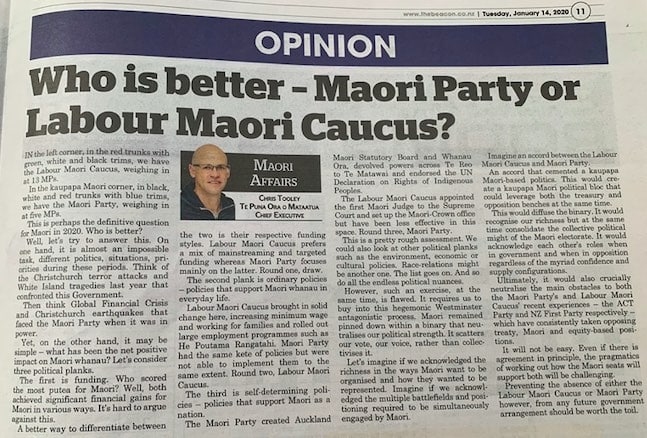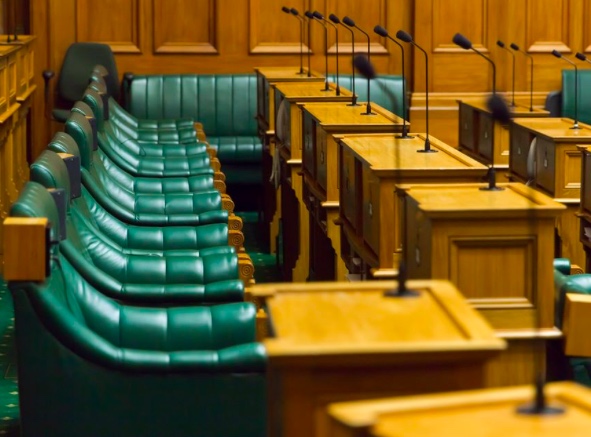In the left corner, in the red trunks with green, white and black trims, we have the Labour Māori Caucus weighing in at 13 MPs.
In the kaupapa Māori corner, in black, white and red trunks with blue trims, we have the Māori Party weighing in at 5 MPs.
This is perhaps the definitive question for Māori in 2020. Who is better?

Well let’s try to answer this. On one hand it is almost an impossible task, different politics, situations, priorities during these periods. Think Christchurch Terror Attacks and White Island tragedies last year that confronted this government. Then think Global Financial Crisis and Christchurch Earthquakes that faced the Māori Party when they were in power.
Yet, on the other hand, it may be simple—what has been the net positive impact on Māori whānau? Let’s consider three political planks.
The first is funding. Who scored the most putea for Māori? Well, both achieved significant financial gains for Māori in various ways. It’s hard to argue against this. A better way to differentiate between the two is their respective funding styles. Labour Māori Caucus prefer a mix of mainstreaming and targeted funding whereas Māori Party focuses mainly on the latter. Round one, draw.
The second plank is ordinary policies—policies that support Māori whānau in everyday life. Labour Māori Caucus brought in solid change here, increasing minimum wage and working for families and rolled out large employment programmes such as He Poutama Rangatahi. Māori Party had the same kete of policies but were not able to implement them to the same extent. Round two, Labour Māori Caucus.
The third is self-determining policies—policies that support Māori as a nation. Māori Party created Auckland Māori Statutory Board and Whānau Ora, devolved powers across Te Reo to Te Mātāwai and endorsed the UN Declaration on Rights of Indigenous Peoples. The Labour Māori Caucus appointed the first Māori Judge to the Supreme Court and set up the Māori-Crown Office but have been less effective in this space. Round three, Māori Party.
This is a pretty rough assessment. We could also look are other political planks such as environment, economic or cultural policies. Race-relations might be another one. The list goes on. And so do all the endless political nuances.
However, such an exercise, at the same time, is flawed. It requires us to buy into this hegemonic Westminster antagonistic process. Māori remained pinned down within a binary that neutralises our political strength. It scatters our vote, our voice, rather than collectivises it.
Let’s imagine if we acknowledged the richness in the ways Māori want to be organised and how they wanted to be represented. Imagine if we acknowledged the multiple battlefields and positioning required to be simultaneously engaged by Māori.
Imagine an accord between the Labour Māori Caucus and Māori Party. An accord that cemented a kaupapa Māori based politics. This would create a kaupapa Māori political bloc that could leverage both the treasury and opposition benches at the same time.
This would diffuse the binary. It would recognise our richness but at the same time consolidate the collective political might of the Māori electorate. It would acknowledge each other’s roles when in government and when in opposition regardless of the myriad confidence and supply configurations.
Ultimately, it would also crucially neutralise the main obstacles to both the Māori Party’s and Labour Māori Caucus’ recent experiences—the ACT Party and NZ First Party respectively—who have consistently taken opposing treaty, Māori and equity-based positions.
It will not be easy. Even if there is agreement in principle, the pragmatics of working out how the Māori seats will support both of their sustainability will be challenging. Preventing the absence of either the Labour Māori Caucus or Māori Party however, from any future government arrangement should be worth the toil.






